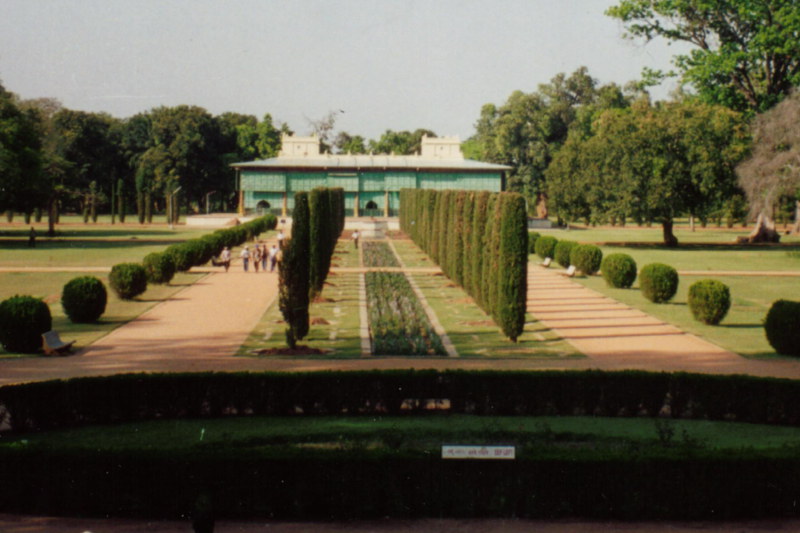After St. Philomena’s Church we headed out of town to Tippu Sultan’s Summer Palace. It was unbearably hot here without much shade or cover from the heat. The outside walls of the summer palace itself are made of metal to keep the heat out. Inside the walls are painted floral designs and the furniture was purple velvet. The museum was full of hundreds of school kids scurrying around. Rather than brave the onslaught of “where are you from, where are you going” I found a nice bush beside the palace to sit under and get away from the heat.
After the Summer Palace we rushed off to see Tippu Sultan’s Fort. The fort is so large you could spend an entire day there, however we were so pressed for time that we basically drove through the fort as fast as we could while the tour guide gave his speil at a speed that would impress even the best auctioneer. I did manage to pick up a piece of information or two, however. There is an outer fort, an inner fort, and supposedly a 10,000 year old temple within the fort walls.
The tour after this was quite hurried: The temple is in that direction. This was where Tippu Sultan last fought Wellington. This is where Tippu’s body was found. The drive slammed on the brakes so we could look at a big stone stating, “Tippu Sultan’s body was found here.” This is the gate to the fort. This is the outside of the fort.
All rushing aside, Tippu is a bit of a cultural hero for the Indian people. Here is a brief history of his life:
Tippu was born in Devanahalli (in Karnataka) on Friday, November 20th, 1753. He was a devout Muslim and also had a gift for learning. His primary goal during his rein was to get rid of the British in India, he signed pacts with the French and also the Amir of Afghanistan and the Sultan of Turkey, but in the end their turned their back on him. Tippu was first defeated by the British in his Capital of Srirangapattana, and forced to sign a humiliating treaty in 1792. The treaty took most of his wealth as well as two of his sons. This didn’t hold him back for long as he rallied his troops in a final attempt to gain back what was lost. He was killed in the fourth Srirangapattana war on May 4th, 1799.
Destinations:
